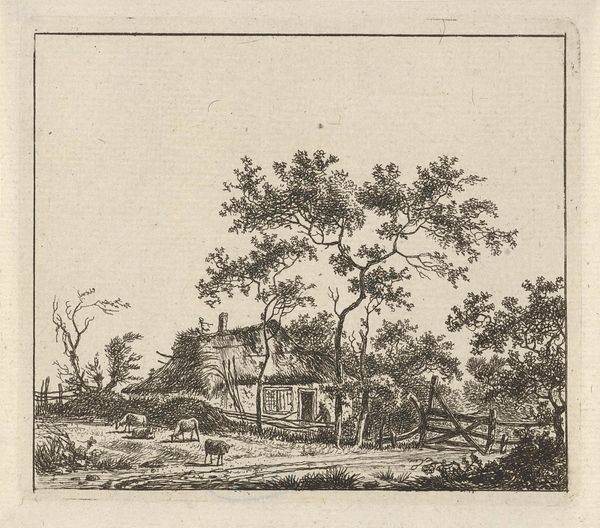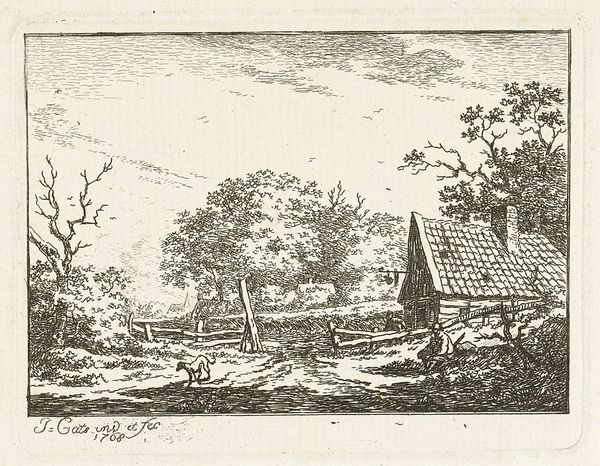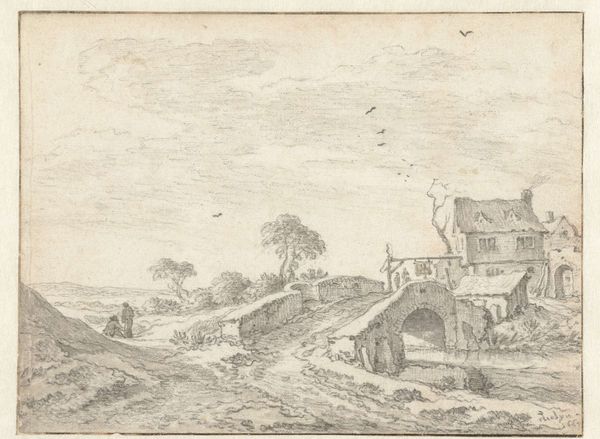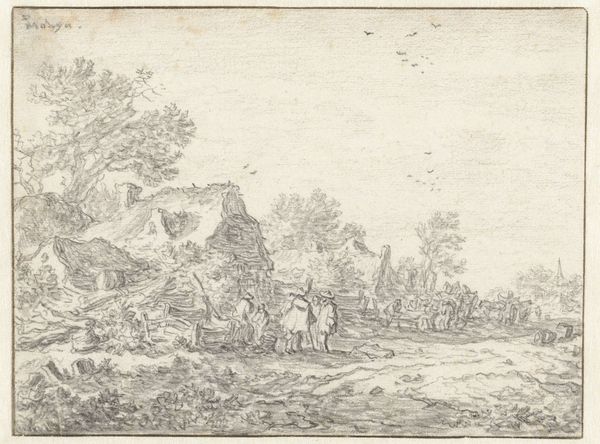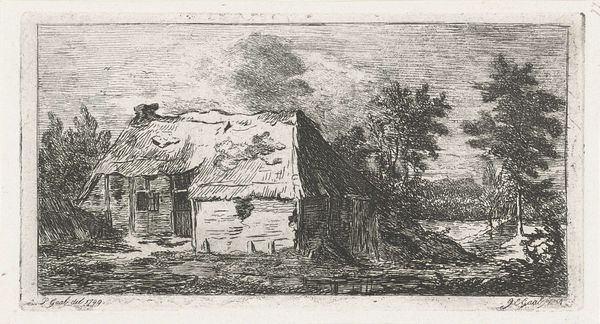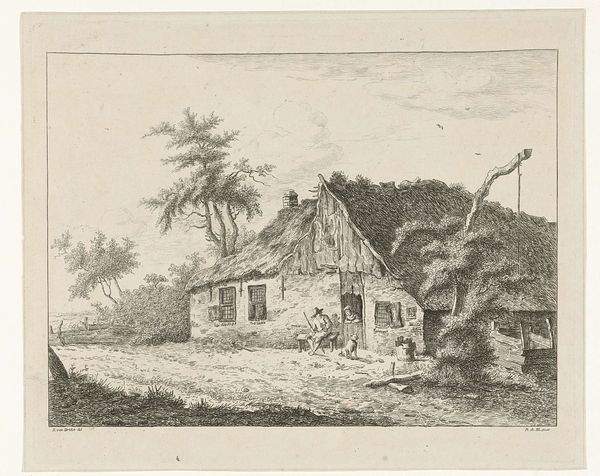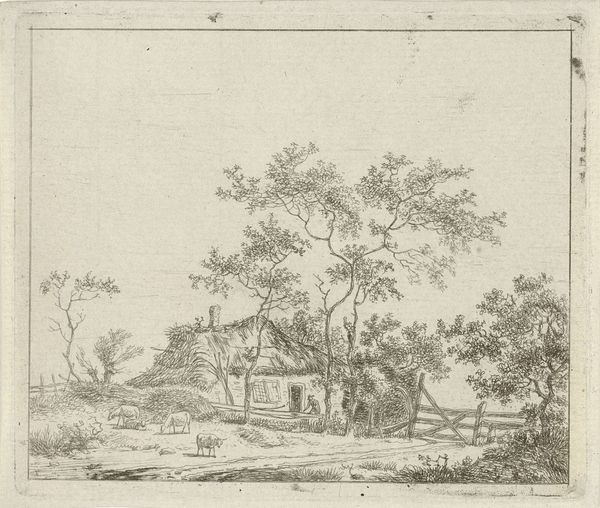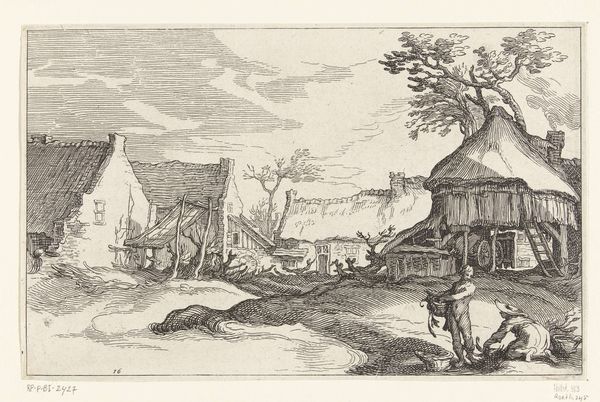
drawing, etching, paper, ink, pen
#
drawing
#
quirky sketch
#
dutch-golden-age
#
pen sketch
#
etching
#
sketch book
#
landscape
#
paper
#
personal sketchbook
#
ink
#
sketchwork
#
pen-ink sketch
#
pen work
#
sketchbook drawing
#
pen
#
storyboard and sketchbook work
#
sketchbook art
Dimensions: height 97 mm, width 144 mm
Copyright: Rijks Museum: Open Domain
Curator: Welcome. We're looking at "Dorpsgezicht met een watermolen," or "Village Scene with a Watermill," an etching possibly from between 1630 and 1682, attributed to Anthonie Waterloo and housed right here at the Rijksmuseum. What catches your eye, initially? Artist: Oh, the rickety roofline just grabs me! It’s all crooked, sagging—looks like a bad hair day for a cottage. And those birds perched on top? Adorable rebels. Curator: I agree there’s a visual narrative here of fragility and, perhaps, resilience. Think about the historical context: the Dutch Golden Age was a period of immense economic prosperity, but that wealth wasn't evenly distributed. Waterloo is known for landscapes, but rarely glorifying wealth; this focus on the rural might be his own subtle commentary on social stratification. How might the decaying structure signify broader themes? Artist: Hmm, that's deep. I just see… charm. A sense of place worn down by time, but still vital. Like my grandpa's old toolshed— falling apart, but full of stories. The way Waterloo uses light, for example. Even with simple ink, he finds a gleam. Curator: The use of light is intriguing. He focuses on natural elements to elevate an otherwise ordinary countryside sketch. Note, for instance, the human element. We see those figures in the front; what does this composition tell us about rural communities during the Dutch Golden Age, or perhaps about Waterloo's concerns in a rapidly changing urban environment? Artist: It feels like stolen moments, though. I can almost hear the water wheel creaking, and those figures chattering. Makes you want to slow down and smell the…well, not the roses. Maybe the damp earth? But this connects somehow with what you're saying, too: it asks us what is actually real and tangible amid all that glitter of golden age. Curator: Perhaps we should think, too, about the etcher’s role within a colonial context and the historical use of landscape. What social functions could the portrayal of rural scenes serve? For instance, does this image risk romanticizing the very real labour of those living and working there? Artist: A heavy thought! Still, this little world gives off warmth somehow... Despite being a pen sketch on paper, it really makes me want to be in this rustic scene. Maybe sit near that mill for hours… Curator: It's fascinating how a seemingly simple etching invites such layers of interpretation, from its formal qualities to its complex historical positioning. Thank you for illuminating that for me today. Artist: You're welcome! Now, if you’ll excuse me, I am off to find myself an equally sagging roofline to contemplate.
Comments
No comments
Be the first to comment and join the conversation on the ultimate creative platform.

